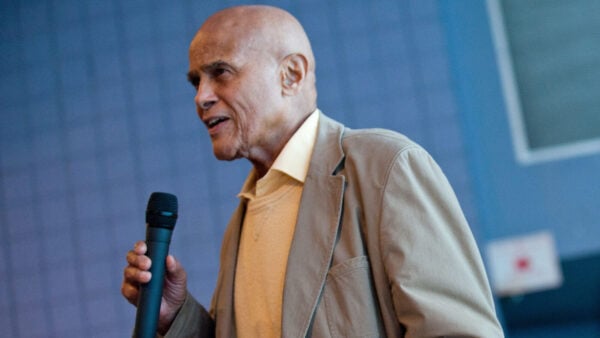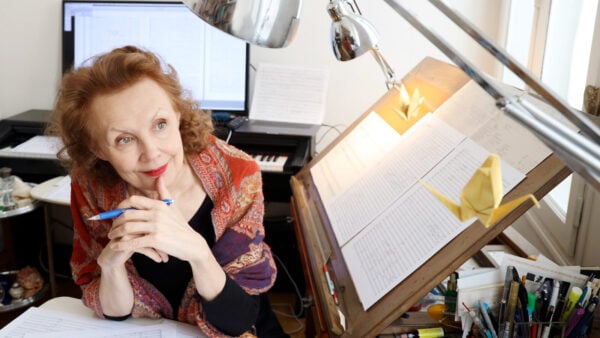
Anish Kapoor (center), the artist who created “Cloud Gate,” poses for his first selfies at one of Chicago’s most popular selfie spots – in front of his iconic sculpture. A group of tourists couldn’t resist jumping in.
New York has the Statue of Liberty. Paris has the Eiffel Tower. And Chicago has “The Bean.”
Artist Anish Kapoor created “Cloud Gate,” a shiny, stainless steel sculpture that has been sitting proudly in the center of Chicago’s Millennium Park for just over a decade. Known more popularly as “The Bean” because of its legume-like shape, “Cloud Gate” has become a symbol of the city of Chicago since it was installed in 2006 and the most popular attraction in the Midwest. In early 2017, Millennium Park was named the city of Chicago’s most visited attraction, and Kapoor’s sculpture is undoubtedly one of the park’s top stops. No trip to Chicago is complete without a selfie in front of “The Bean.”
Kapoor returned to Chicago for the first time since 2006 to receive the Grant Park Music Festival’s Advocate for the Arts Award at its annual benefit. The benefit celebrates Kapoor’s outstanding contribution to the arts in Chicago. He received the award in front of “Cloud Gate,” where he reflected on the reflective work, and posed for his very first selfies in front of it.
“I was a young artist, relatively,” he said, when he received the commission to create what would be his first large-scale public work. “I made it, or I initiated it, other people made it,” he said, “but really it’s owned by all those brides [who take wedding photos here] and all those selfies and all those wonderful people who come here with a certain commitment. It’s the commitment that transfers into the object itself. I like the idea of a public object with its own public life. It’s no longer me. It’s something else. It’s democratic space, space that’s open to all, inviting all. And of course, I’m astounded by the numbers,” or people who visit each year.

Kapoor reflects in front of his reflective sculpture, “Cloud Gate”
Initially, when Kapoor received the commission, he was turned off by the idea of creating a public work, saying, “I like to think of myself as a serious fellow, so I wondered, ‘A popular object? Oh no! What a difficult thing!’” So he spent four or five days sitting on benches and wondered how a popular object could also be a “serious” object.
Is Kapoor surprised his work has become such a recognizable symbol for the city of Chicago?
“It’s very hard to account for what serendipity brings,” he said. “One can’t account for those things, they have their own life. A colloquial name, I think, helps. Calling it “Cloud Gate”? Yes, fine… But calling it “The Bean”? That’s pretty good. It has a language of its own. Nothing to do with me. That’s taken on another persona. That’s one of the key things about public art. It can catch a certain kind of public imagination and invite real participation. That’s what we’re after, isn’t it? We want to be involved. It’s almost as if you grabbed someone’s hand and said, ‘Come and look at this with me.’ And that activity of bringing together does something to us communally. It is democratic. It does actually bring us together.”
He suspects one reason people are so fascinated by the sculpture is that “it defies scale. It’s a big object and a small object at the same time. I think that’s in part because of how it’s made. It has no joints, which means it has an indeterminate quality about whether it’s a big thing or a small. It’s both a big thing and a small thing relative to those buildings.”
“Perhaps the work does have a kind of mystery,” he mused. “Even if you see if and visit it and reflect yourself in it you can’t quite hold it fully. Maybe that’s why you come back?”






